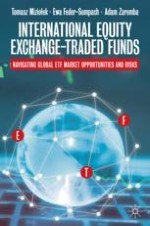
2020 | OriginalPaper | Buchkapitel
6. Regional Equity Exchange-Traded Funds
verfasst von : Tomasz Miziołek, Ewa Feder-Sempach, Adam Zaremba
Erschienen in: International Equity Exchange-Traded Funds
Aktivieren Sie unsere intelligente Suche, um passende Fachinhalte oder Patente zu finden.
Wählen Sie Textabschnitte aus um mit Künstlicher Intelligenz passenden Patente zu finden. powered by
Markieren Sie Textabschnitte, um KI-gestützt weitere passende Inhalte zu finden. powered by